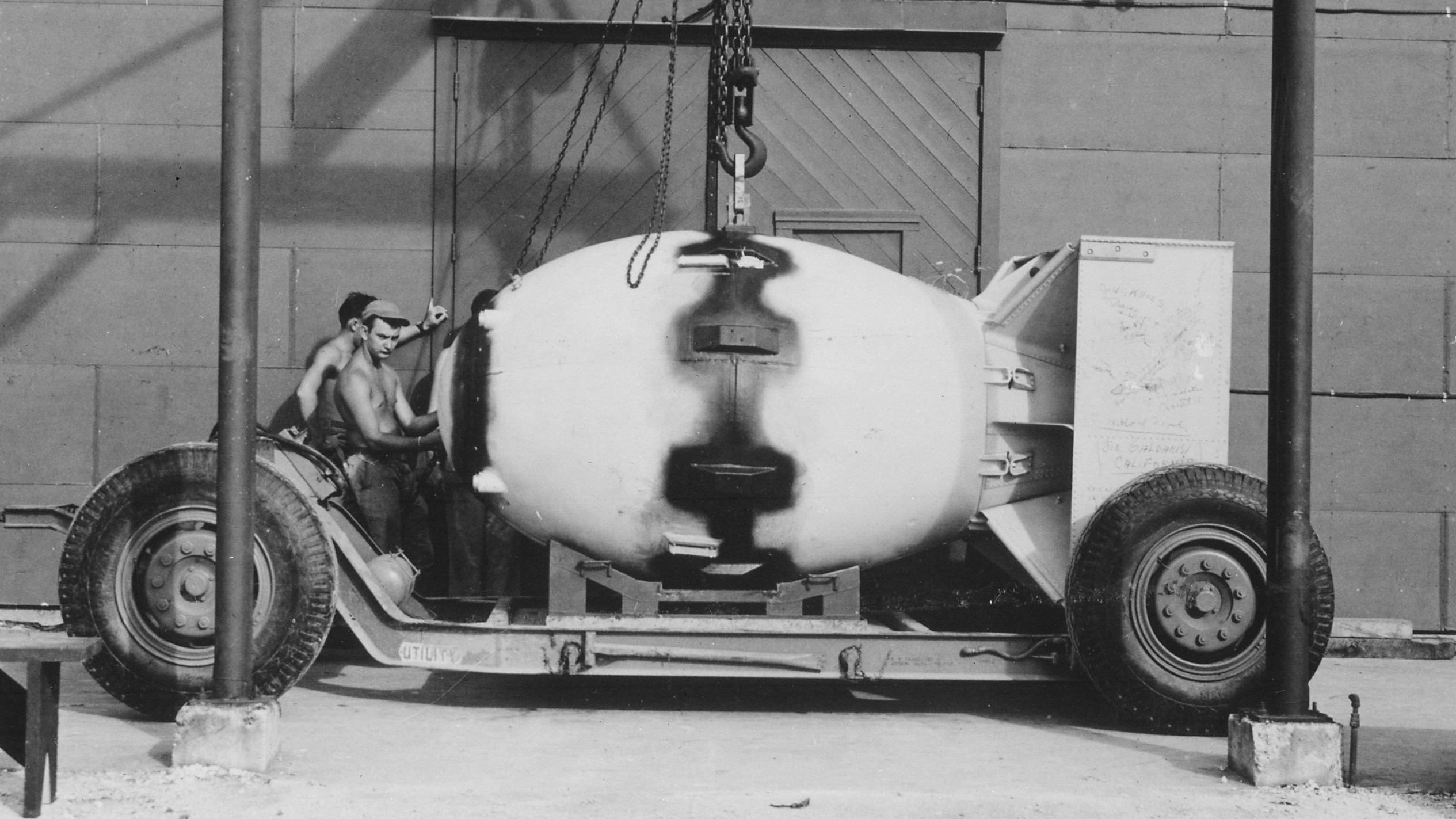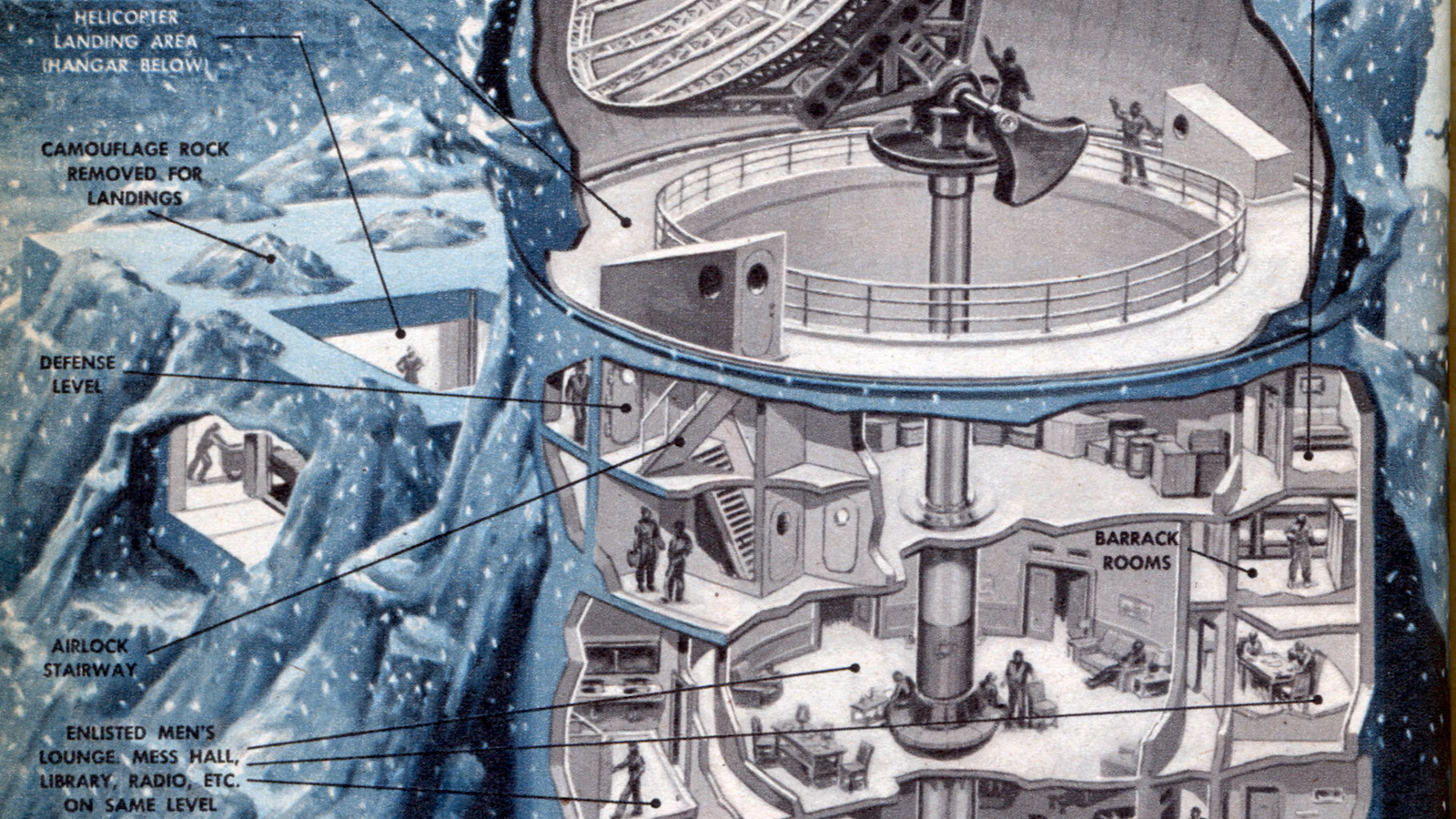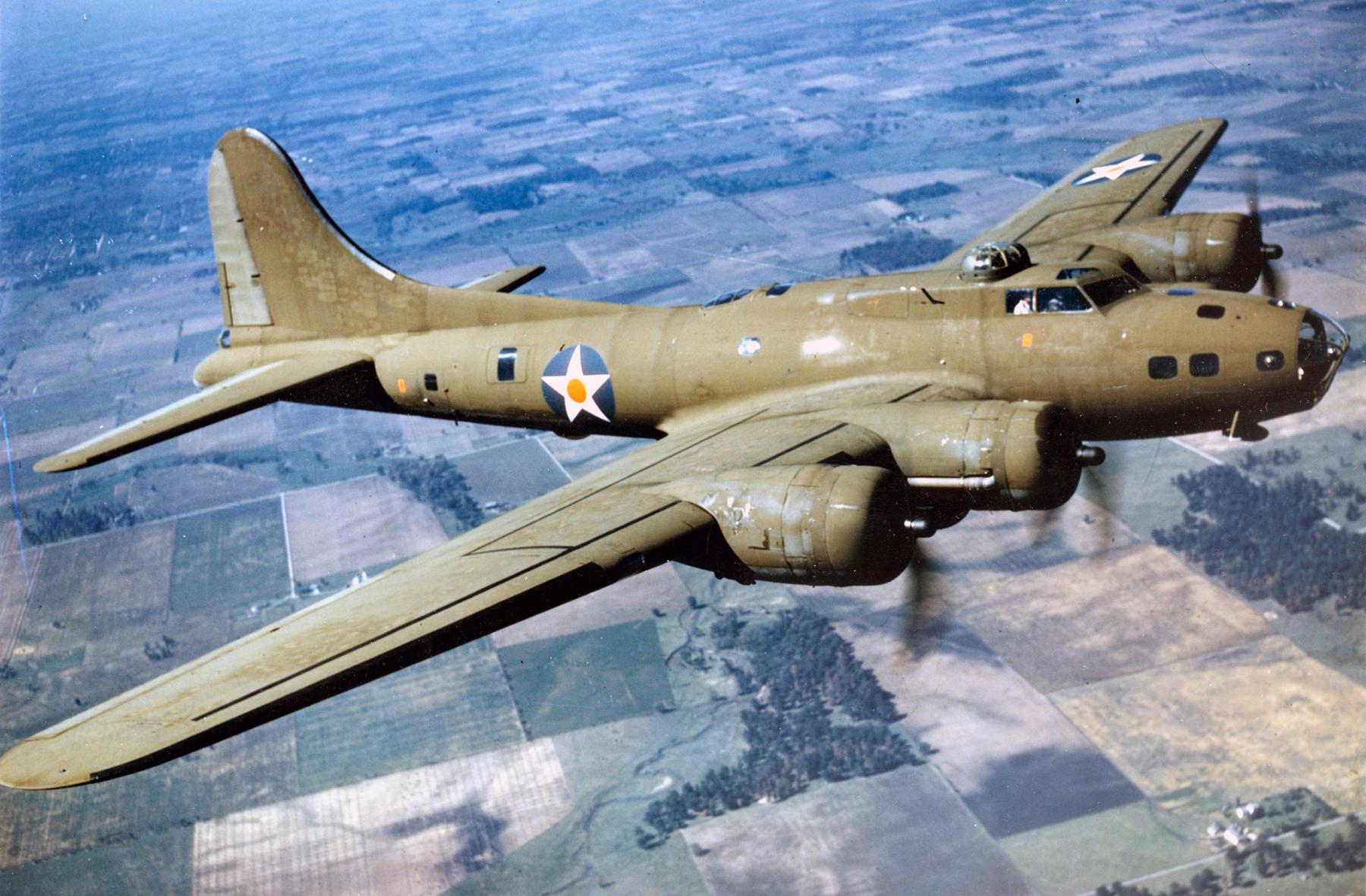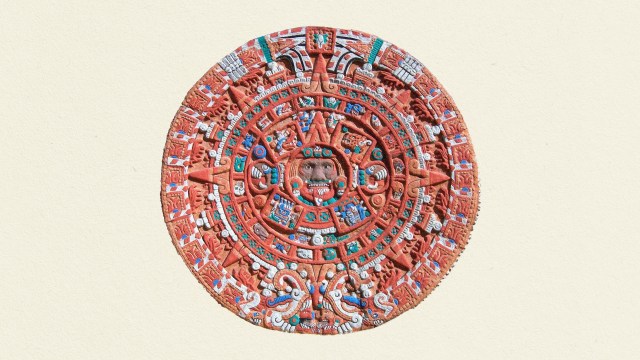How strong of a nuclear bomb could humans make?

- Tsar Bomba was the largest nuclear bomb ever, yielding an explosion equivalent to 57 megatons of TNT, ten times more powerful than all of the combined munitions used during World War II.
- It’s theoretically possible to build a nuclear bomb more than 100 times as powerful as Tsar Bomba, but it wouldn’t at all be practical.
- Thanks to bans on nuclear testing and an enlightened realization that nuclear weapons existentially endanger all life on Earth, it’s unlikely that we would ever see such a thing.
On the morning of October 30th, 1961, airmen onboard a modified Soviet Tu-95 bomber dropped the 60,000-pound metal monstrosity they were transporting from the plane’s bomb bay. A gigantic parachute attached to the 26-foot-long device slowed its descent through the vacant skies above Novaya Zemlya, the remote northern Russian archipelago in the Barents Sea. The plane’s pilots then turned the aircraft around and flew — as fast as possible. They knew what would happen when their delivered cargo reached a set altitude, and they wanted to survive what was to come.
At 30 miles distant, they saw the explosion, then heard and felt it. Tsar Bomba had detonated.
More than 60 years later, the thermonuclear blast equivalent to 57 million tons of TNT (57 megatons), ten times more powerful than all the combined munitions expended during World War II, remains the most enormous human-caused explosion ever recorded on Earth, creating a mushroom cloud 40 miles high and damaging houses hundreds of miles away.
Thanks to bans on nuclear testing and an enlightened realization that nuclear weapons existentially endanger all life on Earth, it’s unlikely that we will ever see anything like the Tsar Bomba deployed again. The warhead with the greatest explosive yield in the United States’ arsenal is now just 1.2 megatons, paltry by comparison.
But if humans ever lost their way, and again engaged in a “no-win” nuclear race, could we make a much bigger bomb? The answer, unfortunately, is “yes.” But it would be difficult and not at all practical.
Bigger than Tsar Bomba
Tsar Bomba already demonstrated this. Originally designed to have a 100-megaton yield, its Soviet makers had to downsize it because it would have been too large to fly in any Soviet aircraft. Moreover, they were concerned that the radiation it might produce would blanket the northern section of the Soviet Union.
Bigger nuclear bombs could be crafted by building them with multiple stages — a conventional bomb sets off a fission bomb that sets off a fusion bomb that sets off a larger fusion bomb and so on. American theoretical physicist Ted Taylor, credited with developing the smallest, most powerful, and most efficient fission weapons for the U.S., noted that you could theoretically have “an infinite number” of bombs connected to make one giant bomb.
This got Edward Teller, the “Father of the Hydrogen Bomb,” excited. In 1954, he apparently proposed a 10,000-megaton nuclear weapon to U.S. government officials.
“A 10,000-megaton weapon, by my estimation, would be powerful enough to set all of New England on fire. Or most of California. Or all of the UK and Ireland. Or all of France. Or all of Germany. Or both North and South Korea,” Alex Wellerstein, a historian of science and nuclear weapons and a professor at the Stevens Institute of Technology, wrote.
Thankfully, Teller’s fascinations were notoriously frenetic, and this idea soon fell by the wayside.
That didn’t stop others from theorizing, however. In the 1970s, scientists at Lawrence Livermore National Laboratory conducted supercomputer calculations that showed that a thermonuclear combustion wave could be initiated inside a large vat of liquid deuterium. Deuterium is an isotope of hydrogen that contains a neutron in addition to one proton in its atomic nucleus, and it is widely used as a fusion fuel in thermonuclear weapons. Deuterium fuses with smaller amounts of another hydrogen isotope, tritium, creating massive amounts of energy in the process. The calculations showed that a nuclear bomb filled with 212 tonnes of deuterium would produce a 5,200-megaton explosion.
Let us hope we never see such a thing.





